Origin-Destination Traffic Survey—Case Study: Data Analyse for Bacau Municipality
Abstract
1. Introduction
2. Materials and Methods
3. Results
3.1. Origin of the Trip
3.2. Destination of the Trip
3.3. Hourly Interval
3.4. Trip Purpose
3.5. Vehicle Occupancy
3.6. Vehicle Registration County
3.7. Type of Vehicle
- Buses and coaches (BCs).
- Trucks and derivatives with two axles (>3.5 t) (TD2s).
- Trucks and derivatives with 3 or 4 axles (TD3s).
- Trucks and special vehicles with MTMA ≤ 3.5 tonnes (TSs).
- Passenger cars (PCs).
- Passenger transport minibuses 8 + 1 seats (PTs).
- Articulated vehicles and tugs with a trailer (AVs).
3.8. Complex Data Analysis
4. Discussion
5. Conclusions
Author Contributions
Funding
Institutional Review Board Statement
Informed Consent Statement
Data Availability Statement
Conflicts of Interest
References
- Alsger, A.; Assemi, B.; Mesbah, M.; Ferreira, L. Validating and improving public transport origin-destination estimation algorithm using smart card fare data. Transp. Res. Part C Emerg. Technol. 2016, 68, 490–506. [Google Scholar] [CrossRef]
- Anthony, C.; Chootinan, P.; Ryu, S.; Wong, S.C. Quality measures of origin-destination trip table estimated from traffic counts: Review and new generalized demand scale measure. J. Transp. Eng. 2012, 138, 1340–1349. [Google Scholar]
- Bonnel, P.; Fekih, M.; Smoreda, Z. Origin-Destination estimation using mobile network probe data. Transp. Res. Procedia 2018, 32, 69–81. [Google Scholar] [CrossRef]
- SUMP. Guidelines European Programme for Accelerating the Take-Up of Sustainable Urban Mobility Plans. 2019. Available online: https://www.eltis.org/sites/default/files/sump_guidelines_2019_interactive_document_1.pdf (accessed on 12 June 2022).
- Werland, S. Diffusing sustainable urban mobility planning in the EU. Sustainability 2020, 12, 8436. [Google Scholar] [CrossRef]
- Law 350/2001 Regarding Spatial Planning and Urbanism, Republished with Addition and Changes in March 2022. Available online: https://legislatie.just.ro/Public/DetaliiDocument/29453 (accessed on 15 July 2022).
- Order no. 233/2016 for the Approval of the Methodological Norms for the Application of Law no. 350/2001 on Spatial Planning and Urbanism and on the Elaboration and Updating of Urban Planning Documentations. Available online: https://isc.gov.ro/files/2018/Legislatie/Ordinul%20nr%20233_2016%20Norme%20aplicare%20%20Legiea%20350_2001.pdf (accessed on 12 June 2022).
- Chimba, D.; Emaasit, D.; Kutela, B. Integrating Origin-Destination survey and stochastic user equilibrium: A case study for route relocation. J. Transp. Technol. 2012, 2, 297–304. [Google Scholar] [CrossRef]
- Haitao, Y.; Guoliang, L. A survey of traffic prediction: From spatio-temporal data to intelligent transportation. Data Sci. Eng. 2021, 6, 63–85. [Google Scholar]
- Munizaga, M.; Palma, C. Estimation of a disaggregate multimodal public transport Origin–Destination matrix from passive smartcard data from Santiago, Chile. Transp. Res. Part C Emerg. Technol. 2012, 24, 9–18. [Google Scholar] [CrossRef]
- Rupprecht Consult. 2005: SUTP Efficiency Study: Sustainable Urban Transport Plans (SUTP) and Urban Environment: Policies, Effects, and Simulations—Review of European References Regarding CO2 Emissions, Final Report. 10 October 2005. Available online: http://ec.europa.eu/environment/urban/pdf/sutp.pdf (accessed on 22 July 2022).
- Rupprecht Consult and Edinburgh Napier University. 2012: State-of-the-Art of Sustainable Urban Mobility Plans in Europe, Revised Version, September 2012. Available online: http://www.eltis.org/docs/sump_library/eltisplus_state-of-the-art_of_sumps_in_europe_sep2011_FINAL.pdf (accessed on 22 July 2022).
- Florin, R.; Olariu, S. A survey of vehicular communications for traffic signal optimization. Veh. Commun. 2015, 2, 70–79. [Google Scholar] [CrossRef]
- SMATS. Smart Traffic—5 Origin-Destination Study Methods. Available online: https://www.smatstraffic.com/2022/07/14/5-origin-destination-study-methods-2/ (accessed on 22 April 2022).
- Guy, B.P.; Fricker, J.D. Guidelines for Data Collection Techniques and Methods for Roadside Station Origin-Destination Studies, Purdue University, Indiana. 2005. Available online: https://docs.lib.purdue.edu/cgi/viewcontent.cgi?article=1716&context=jtrp (accessed on 12 July 2022).
- Kawasaki, S. The challenges of transportation/traffic statistics in Japan and directions for the future. IATSS Res. 2015, 39, 1–8. [Google Scholar] [CrossRef]
- Mandhare, P.A.; Kharat, V.; Patil, C.A. Intelligent road traffic control system for traffic congestion: A perspective. Int. J. Comput. Sci. Eng. 2018, 6, 908–915. [Google Scholar] [CrossRef]
- Nagy, A.A.M.; Simon, V. Survey on traffic prediction in smart cities. Pervasive Mob. Comput. 2018, 50, 148–163. [Google Scholar] [CrossRef]
- Seo, T.; Bayen, A.M.; Kusakabe, T.; Asakura, Y. Traffic state estimation on highway: A comprehensive survey. Annu. Rev. Control 2017, 43, 128–151. [Google Scholar] [CrossRef]
- Shahgholian, M.; Gharavian, D. Advanced traffic management systems: An overview and a development strategy. Electr. Eng. Syst. Sci. 2018, 1–39. Available online: https://arxiv.org/ftp/arxiv/papers/1810/1810.02530.pdf (accessed on 22 April 2022).
- SCNJ—Sussex County New Jersey. Sussex County Ten-Year Mobility Strategy. 2006. Available online: https://www.sussex.nj.us/cn/webpage.cfm?TPID=5765 (accessed on 11 August 2021).
- Eastside Highway Origin-Destination (od) Survey Summary. Available online: http://www.eastsidehighway.com/wp-content/uploads/2014/05/20110122_ESH-OD-Survey-Techmemo_Final1.pdf (accessed on 22 July 2022).
- Soltésza, T.; Abaa, A.; Bánfia, M.; Kózela, M. PFS method for pedestrian origin-destination surveys of enclosed areas. Transp. Res. Procedia 2017, 27, 680–687. [Google Scholar] [CrossRef]
- Pirkko, K. Origin-Destination Matrix Estimation with a Conditionally. Available online: https://helda.helsinki.fi/bitstream/handle/10138/317282/document.pdf?sequence=1 (accessed on 22 July 2022).
- Andrei, A.C.; Papuc, I.E. A Sustainable Urban Mobility Plan—Solution for a City of the Future? Rethinking Global Space, Culture and Change in Organizations; Conference Proceedings. 2016; ISBN 978-606-775-454-4. 2016. Available online: https://seaopenresearch.eu/Conferences/Proceedings/Article/NORD4_5.pdf (accessed on 12 July 2022).
- Mitran, G.; Ilie, S.; Nicolae, V. Origin—Destination traffic survey. Case study: Data collection for Pitesti—Mioveni transport model. Ann. Oradea Univ. Fascicle Manag. Technol. Eng. 2012, XI (XXI). Available online: https://imt.uoradea.ro/auo.fmte/files-2012-v2/TRANSPORT/Mitran%20Gabriela%20L1.pdf (accessed on 22 July 2022).
- Search Corporation. Traffic Study at the Level of Deva Municipality. 2009. Available online: https://www.primariadeva.ro/images/uploads/documente/PMUD_aprobat.pdf (accessed on 22 April 2022).
- TTL Planning. The Sustainable Urban Mobility Plan of Reghin Municipality. 2017. Available online: https://www.primariareghin.ro/fileadmin/editorimages/doc/studiu_trafic/Memoriu_trafic_dezmembrat_partea1.pdf (accessed on 22 April 2022).
- Sussex Country, New Jersey, Chapter 3: Origin/Destination Survey. Available online: https://www.sussex.nj.us/documents/planning/mobility/Mobility%20Study%20Chapter%203.pdf (accessed on 7 March 2023).
- East Side Highway, Eastside Highway Origin-Destination (OD) Survey Summary. Available online: http://www.eastsidehighway.com/wp-content/uploads/2014/04/20110122_ESH-OD-Survey-Techmemo_Final.pdf (accessed on 7 March 2023).
- Bartuska, L.; Stopka, O.; Hanzl, J.; Sedivy, J.; Rybicka, I. Changes in transport behaviour of the czech population caused by state of emergency. Transp. Probl. 2022, 17, 101–114. [Google Scholar] [CrossRef]
- Jordová, R.; Bruhová-Foltýnová, H. Rise of a new sustainable urban mobility planning paradigm in local governance: Does the SUMP make a difference? Sustainability 2021, 13, 5950. [Google Scholar] [CrossRef]
- Campisi, T.; Akgün, N.; Ticali, D.; Tesoriere, G. Exploring public opinion on personal mobility vehicle use: A case study in Palermo, Italy. Sustainability 2020, 12, 5460. [Google Scholar] [CrossRef]
- Krukle, Z.; Biezina, L.; Ernsteins, R. Sustainable urban mobility planning development preconditions: Governance system approach. Eng. Rural. Dev. 2019, 18, 954–963. [Google Scholar]
- Ravensbergen, L.; Fournier, J.; El-Geneidy, A. Exploratory analysis of mobility of care in Montreal, Canada. Transp. Res. Rec. 2023, 2677, 1499–1509. [Google Scholar] [CrossRef]
- Mohammad, P.; Gonzalo, R.; Asal, K.F. Pedestrian mobility in Temuco, Chile: The contribution of density and socio-demographic factors. Rev. Urban. 2022, 46, 57–74. Available online: https://scholar.google.com/citations?view_op=view_citation&hl=en&user=exxVzrkAAAAJ&citation_for_view=exxVzrkAAAAJ:4DMP91E08xMC (accessed on 12 May 2022).
- Bender, J.É.C.; Nassi, C.D.; Bortolini, J. Diferenças de padrão de viagem na Região Metropolitana do Rio de Janeiro (RMRJ). Rev. Transp. Territ. 2021, 24, 203–223. [Google Scholar]
- Thapa, K.; Sukhwani, V.; Deshkar, S.; Shaw, R.; Mitra, B.K. Strengthening urban-rural resource flow through regional circular and ecological sphere (R-CES) approach in Nagpur, India. Sustainability 2020, 12, 8663. [Google Scholar] [CrossRef]
- Japan International Cooperation Agency (JICA). Data collection survey on traffic improvement in Kathmandu Valley. The Federal Democratic Republic of Nepal, Ministry of Physical Planning, Works and Transport Management, Department of Roads. 2012; pp. 1–92. Available online: https://openjicareport.jica.go.jp/pdf/12082459_01.pdf (accessed on 7 March 2023).
- PMUD—Sustainable Urban Mobility Plan for Bacau Municipality. 2018. Available online: https://municipiulbacau.ro/wp-content/uploads/2019/01/02.planul-de-mobilitate-urbana-durabila-bacau-pmud.pdf (accessed on 12 May 2022).
- Tomozei, C.; Panainte-Lehadus, M.; Irimia, O.; Nedeff, F. Public transport in Bacau City. In Proceedings of the 2020 7th International Conference on Energy Efficiency and Agricultural Engineering (EE&AE), Ruse, Bulgaria, 12–14 November 2020; Available online: https://ieeexplore.ieee.org/document/9279088/authors#authors (accessed on 28 February 2023).
- Corporation Origine Origin Pro 2019b, Version 9.6.5.169. Available online: https://www.originlab.com/ (accessed on 12 January 2023).
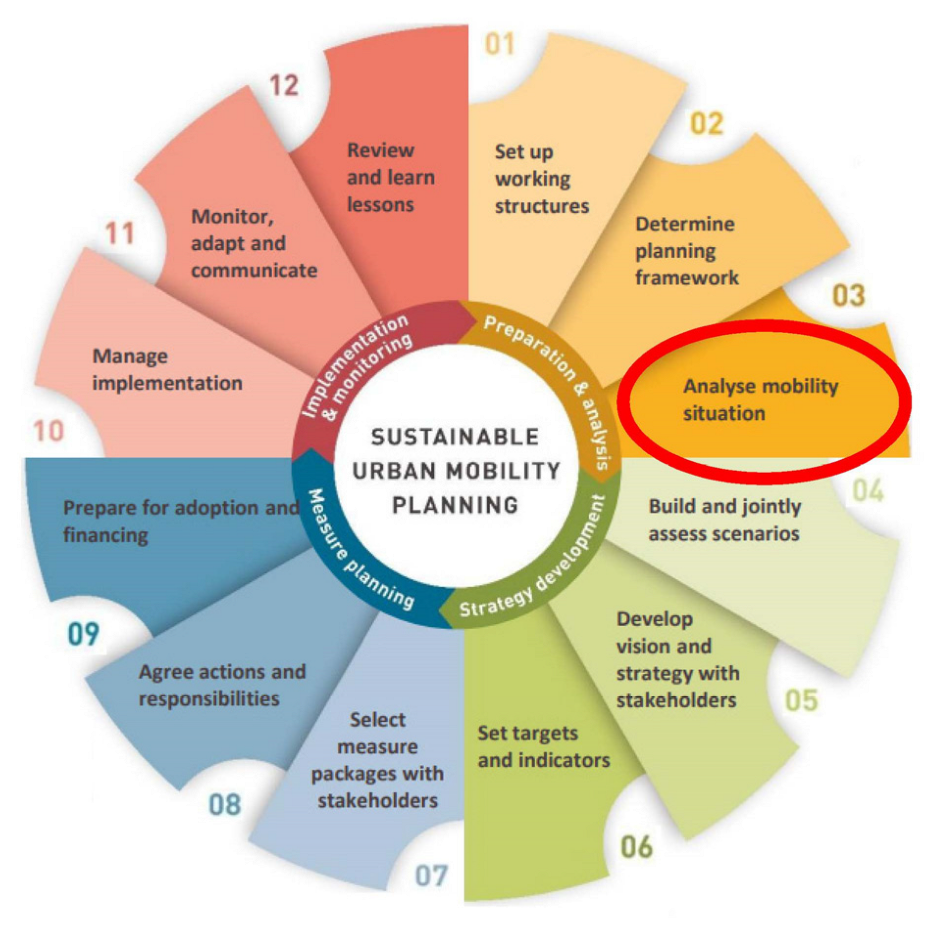

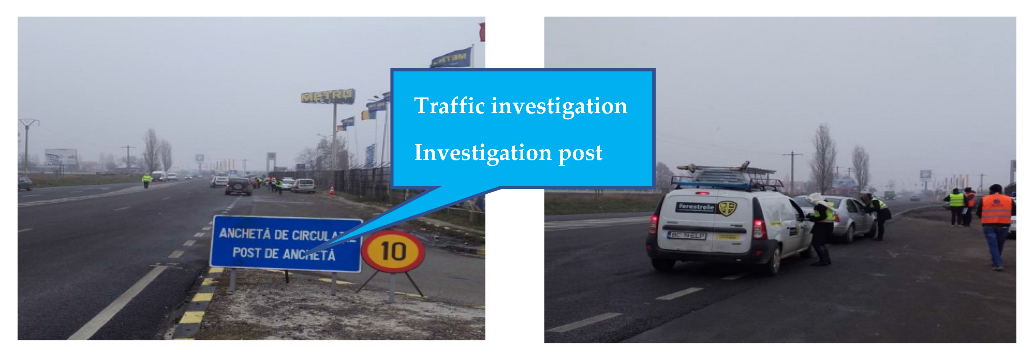
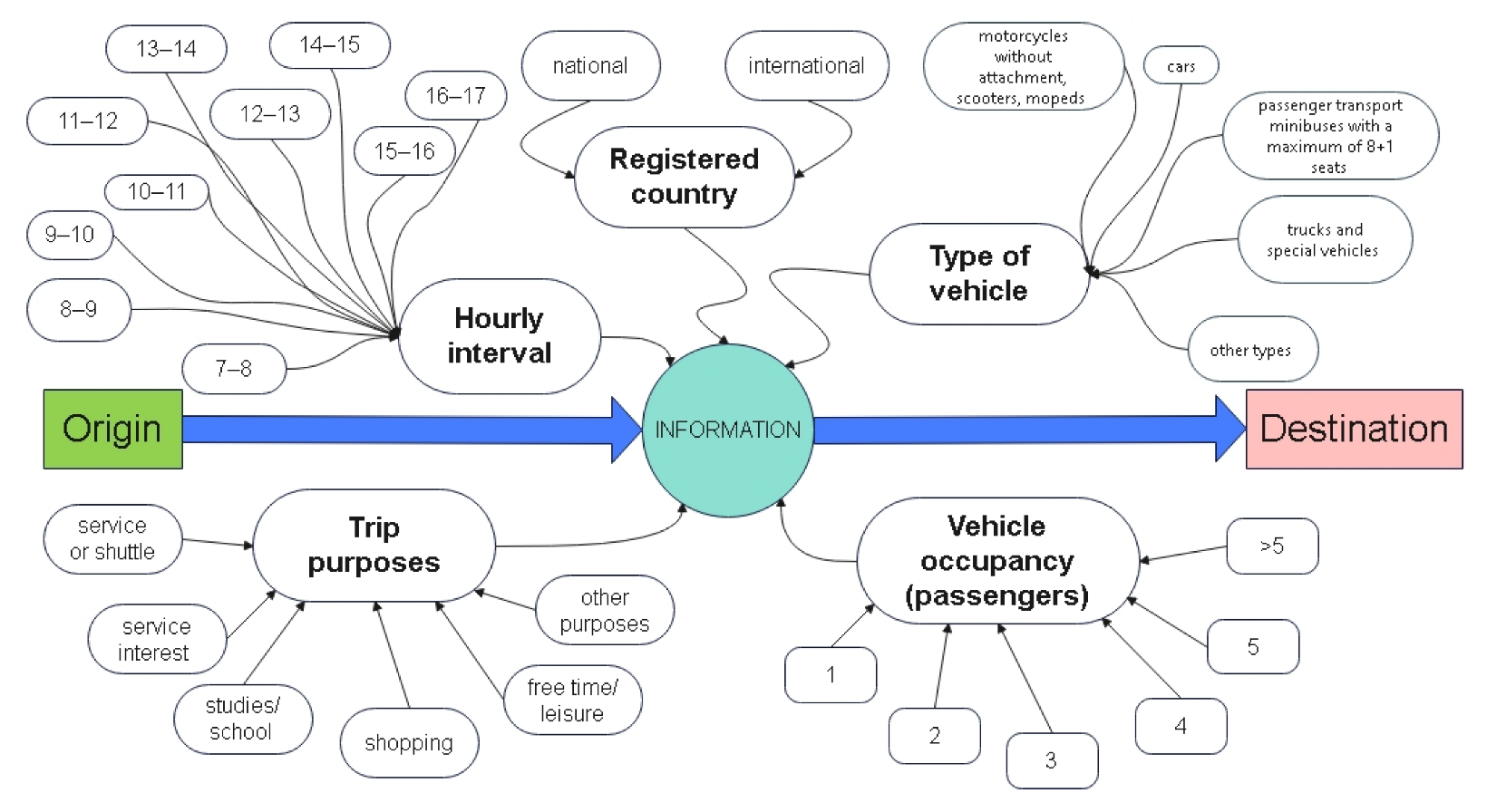




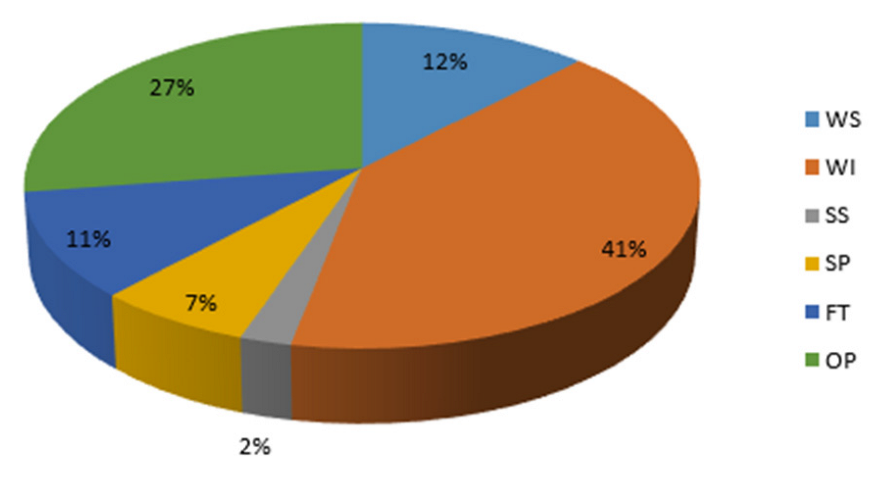



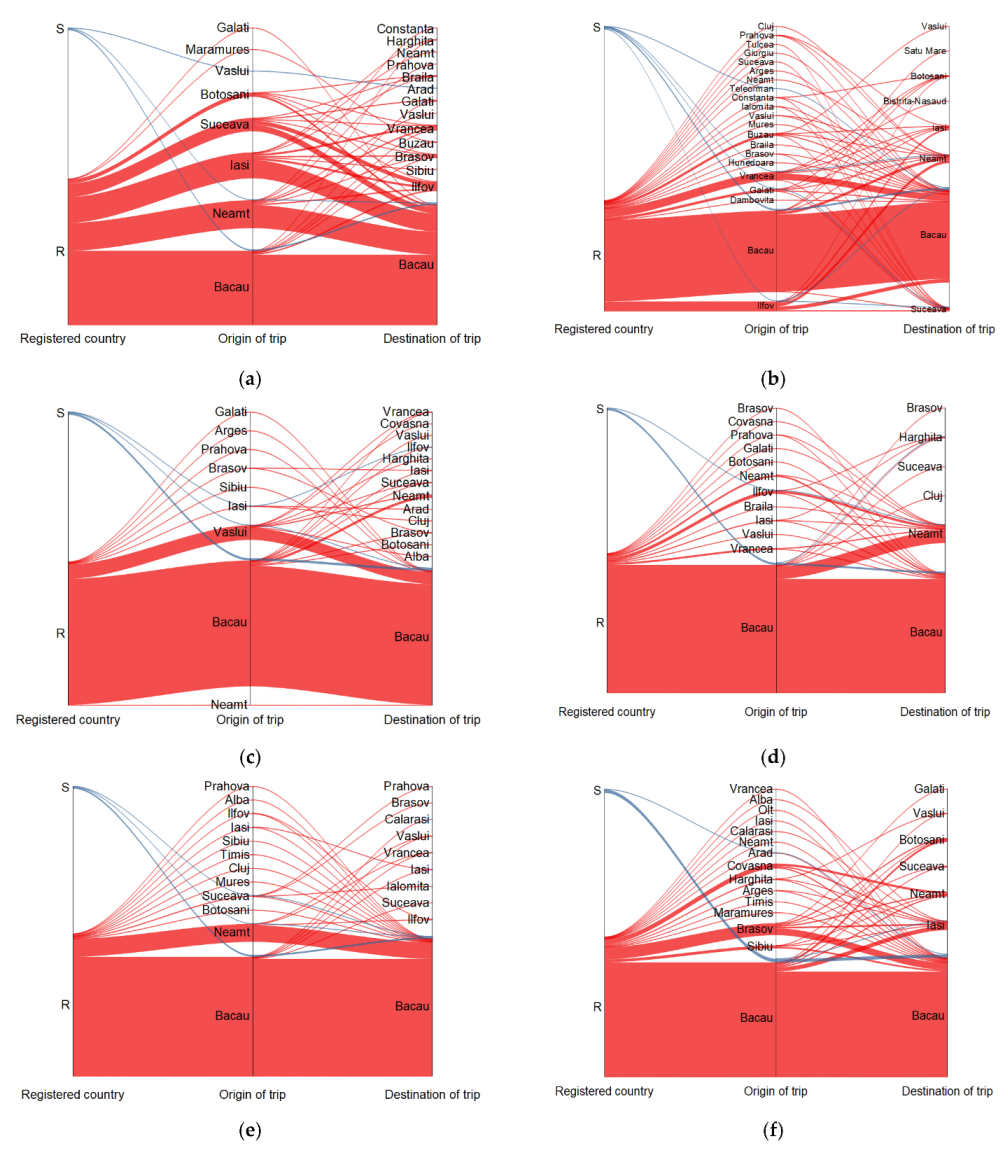

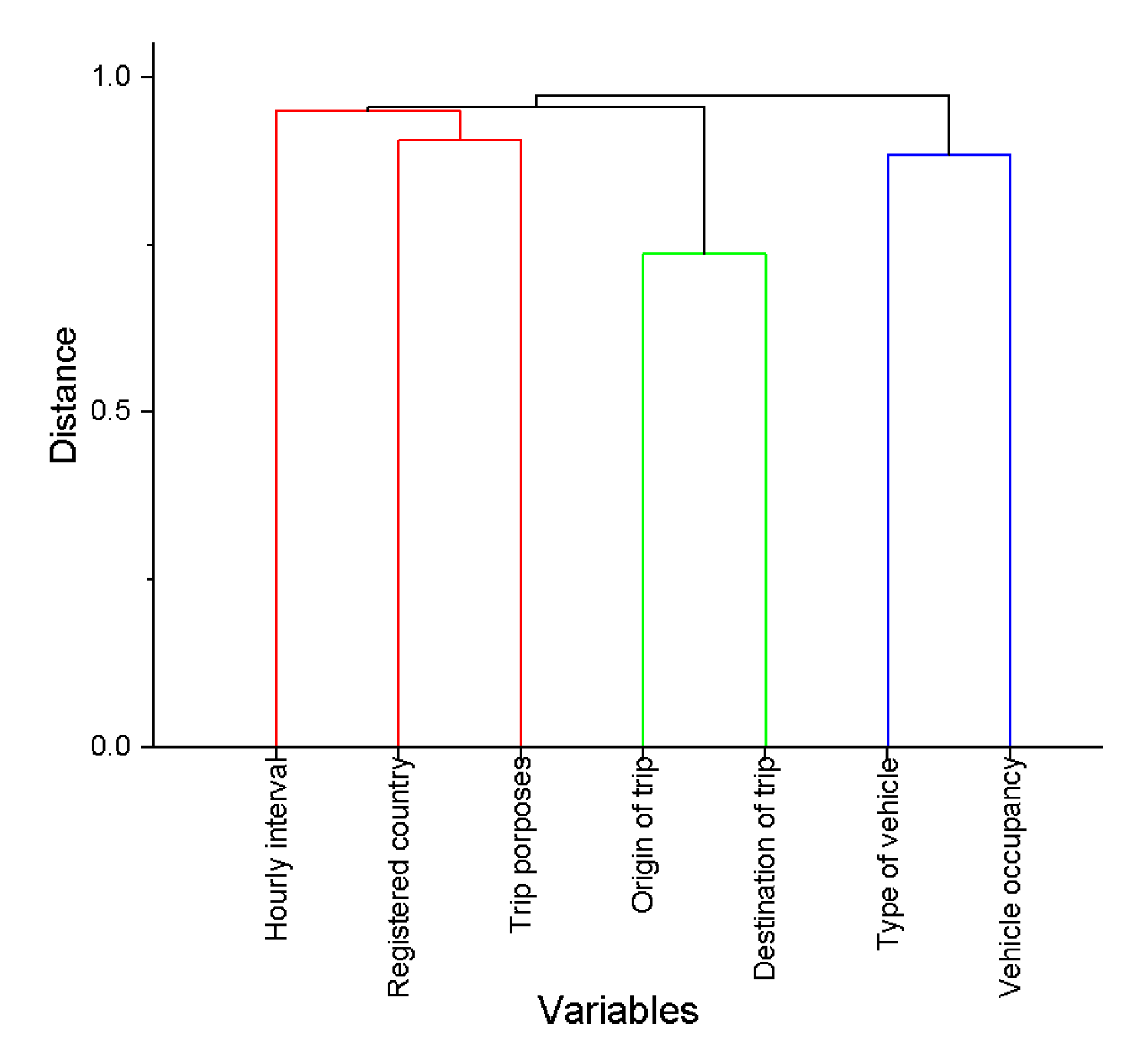
| Location under Analysis | Type of Data Analysis | Findings | Gaps |
|---|---|---|---|
| Romania—Pitesti [25] |
|
| Small number of questions in the questionnaire (5) The number of questionnaires analysed was not specified |
| USA—Sussex, NJ [29] |
|
| The questionnaire was conducted only for a period of 3 h, in the morning |
| USA— Bloomington-Normal, IL [30] |
|
| There is no data on the period during which monitoring was carried out |
| Czech Republic [31] |
|
| Investigation was affected by the COVID-19 situation |
| Czech Republic [32] | statistical and graphical analysis | questionnaire completed online | A small number of respondents participated in the questionnaire (45), who were chosen as experts |
| Italy—Palermo [33] | statistical and graphical analysis |
| Some questions were multiple choice |
| Latvia—Valmiera [34] | document analysis |
| No values were given, and the way the questionnaire was carried out was not shown |
| Canada—Montreal, QC [35] | statistical and graphical analysis |
| The mode of completion of the questionnaire was not specified The period during which the analysis was carried out was not specified |
| Chile—Temuco [36] | statistical analysis |
| The mode of completion of the questionnaire was not specified The analysis was carried out in 2013 and the article presenting the data was published in 2022 |
| Brazil—Rio de Janeiro [37] | statistical and graphical analysis |
| The period during which the analysis was carried out was not specified |
| India—Nagpur [38] | statistical and graphical analysis |
| The study was carried out for a region and not for a city |
| Nepal—Kathmandu Valley [39] | statistical and graphical analysis |
| The study was carried out for a region and not for a city |
| Point Number | A1 | A2 | A3 | A4 | A5 | A6 | All Routes | ||||||||
|---|---|---|---|---|---|---|---|---|---|---|---|---|---|---|---|
| Origin of Trip | T | % | T | % | T | % | T | % | T | % | T | % | T | % | |
| Bacau County | 426 | 72.94 | 217 | 50.93 | 449 | 87.35 | 405 | 83.67 | 538 | 91.49 | 365 | 82.2 | 2400 | 78.94 | |
| Other Counties | 158 | 27.06 | 209 | 49.07 | 65 | 12.65 | 79 | 16.33 | 50 | 8.51 | 79 | 17.8 | 640 | 21.06 | |
| Total | 584 | 100 | 426 | 100 | 514 | 100 | 484 | 100 | 588 | 100 | 444 | 100 | 3040 | 100 | |
| Point Number | A1 | A2 | A3 | A4 | A5 | A6 | All Routes | ||||||||
|---|---|---|---|---|---|---|---|---|---|---|---|---|---|---|---|
| Destination of Trip | T | % | T | % | T | % | T | % | T | % | T | % | T | % | |
| Bacau County | 487 | 83.39 | 351 | 82.39 | 484 | 94.16 | 467 | 96.48 | 502 | 85.37 | 379 | 85.36 | 2670 | 87.82 | |
| Other Counties | 97 | 16.61 | 75 | 17.61 | 30 | 5.84 | 17 | 3.52 | 86 | 14.63 | 65 | 14.64 | 370 | 12.18 | |
| Total | 584 | 100 | 426 | 100 | 514 | 100 | 484 | 100 | 588 | 100 | 444 | 100 | 3040 | 100 | |
| Point Number | A1 | A2 | A3 | A4 | A5 | A6 | All Routes | ||||||||
|---|---|---|---|---|---|---|---|---|---|---|---|---|---|---|---|
| Hourly Interval | T | % | T | % | T | % | T | % | T | % | T | % | T | % | |
| 7.30–8.30 | 91 | 15.58 | 63 | 14.78 | 79 | 15.36 | 83 | 17.14 | 92 | 15.64 | 65 | 14.63 | 473 | 15.55 | |
| 8.30–9.30 | 77 | 13.18 | 53 | 12.44 | 35 | 6.80 | 44 | 9.09 | 84 | 14.28 | 45 | 10.13 | 338 | 11.11 | |
| 9.30–10.30 | 43 | 7.36 | 45 | 10.56 | 44 | 8.56 | 39 | 8.05 | 63 | 10.71 | 38 | 8.55 | 272 | 8.94 | |
| 10.30–11.30 | 61 | 10.44 | 52 | 12.20 | 48 | 9.33 | 28 | 5.78 | 46 | 7.82 | 25 | 5.63 | 260 | 8.55 | |
| 11.30–12.30 | 68 | 11.64 | 49 | 11.50 | 65 | 12.64 | 54 | 11.15 | 49 | 8.33 | 58 | 13.06 | 343 | 11.28 | |
| 12.30–13.30 | 74 | 12.67 | 46 | 10.79 | 72 | 14.00 | 59 | 12.19 | 59 | 10.03 | 57 | 12.83 | 367 | 12.07 | |
| 14.30–15.30 | 39 | 6.67 | 20 | 4.694 | 26 | 5.058 | 18 | 3.71 | 49 | 8.33 | 33 | 7.43 | 185 | 6.08 | |
| 15.30–16.30 | 44 | 7.53 | 30 | 7.042 | 58 | 11.28 | 72 | 14.87 | 58 | 9.86 | 48 | 10.81 | 310 | 10.19 | |
| 16.30–17.30 | 87 | 14.89 | 68 | 15.96 | 87 | 16.92 | 87 | 17.97 | 88 | 14.96 | 75 | 16.89 | 492 | 16.18 | |
| Total | 584 | 100 | 426 | 100 | 514 | 100 | 484 | 100 | 588 | 100 | 444 | 100 | 3040 | 100 | |
| Point Number | A1 | A2 | A3 | A4 | A5 | A6 | All Routes | ||||||||
|---|---|---|---|---|---|---|---|---|---|---|---|---|---|---|---|
| Trip Purpose | T | % | T | % | T | % | T | % | T | % | T | % | T | % | |
| WS | 275 | 47.08 | 175 | 41.07 | 209 | 40.66 | 182 | 37.60 | 199 | 33.84 | 199 | 44.81 | 1239 | 40.75 | |
| WI | 47 | 8.04 | 38 | 8.92 | 54 | 10.50 | 56 | 11.57 | 138 | 23.46 | 40 | 9.00 | 373 | 12.26 | |
| SS | 13 | 2.22 | 17 | 3.99 | 8 | 1.55 | 18 | 3.71 | 0 | 0 | 12 | 2.702 | 68 | 2.23 | |
| SP | 35 | 5.99 | 31 | 7.27 | 77 | 14.98 | 33 | 6.81 | 11 | 1.87 | 18 | 4.054 | 205 | 6.74 | |
| FT | 90 | 15.41 | 13 | 3.05 | 30 | 5.83 | 74 | 15.28 | 33 | 5.61 | 84 | 18.91 | 324 | 10.65 | |
| OP | 124 | 21.23 | 152 | 35.68 | 136 | 26.45 | 121 | 25 | 207 | 35.20 | 91 | 20.49 | 831 | 27.33 | |
| Total | 584 | 100 | 426 | 100 | 514 | 100 | 484 | 100 | 588 | 100 | 444 | 100 | 3040 | 100 | |
| Point Number | A1 | A2 | A3 | A4 | A5 | A6 | All Routes | ||||||||
|---|---|---|---|---|---|---|---|---|---|---|---|---|---|---|---|
| Occupancy | T | % | T | % | T | % | T | % | T | % | T | % | T | % | |
| 1 | 331 | 56.67 | 245 | 57.51 | 262 | 50.97 | 285 | 58.88 | 374 | 63.60 | 277 | 62.38 | 1774 | 58.35 | |
| 2 | 160 | 27.39 | 128 | 30.04 | 156 | 30.35 | 128 | 26.44 | 152 | 25.85 | 101 | 22.74 | 825 | 27.13 | |
| 3 | 58 | 9.93 | 33 | 7.74 | 54 | 10.5 | 27 | 5.57 | 38 | 6.46 | 34 | 7.65 | 244 | 8.02 | |
| 4 | 17 | 2.91 | 13 | 3.05 | 24 | 4.66 | 11 | 2.27 | 13 | 2.21 | 15 | 3.37 | 93 | 3.05 | |
| 5 | 7 | 1.19 | 4 | 0.93 | 15 | 2.91 | 6 | 1.23 | 9 | 1.53 | 6 | 1.35 | 47 | 1.54 | |
| >5 | 11 | 1.88 | 3 | 0.70 | 3 | 0.58 | 27 | 5.57 | 2 | 0.34 | 11 | 2.47 | 57 | 1.87 | |
| Total | 584 | 100 | 426 | 100 | 514 | 100 | 484 | 100 | 588 | 100 | 444 | 100 | 3040 | 100 | |
| Point Number | A1 | A2 | A3 | A4 | A5 | A6 | All Routes | ||||||||
|---|---|---|---|---|---|---|---|---|---|---|---|---|---|---|---|
| Occupancy | T | % | T | % | T | % | T | % | T | % | T | % | T | % | |
| N | 568 | 97.26 | 419 | 98.35 | 505 | 98.25 | 476 | 98.35 | 579 | 98.46 | 432 | 97.29 | 2979 | 97.99 | |
| I | 16 | 2.74 | 7 | 1.65 | 9 | 1.65 | 8 | 1.75 | 9 | 1.64 | 12 | 2.71 | 61 | 2.01 | |
| Total | 584 | 100 | 426 | 100 | 514 | 100 | 484 | 100 | 588 | 100 | 444 | 100 | 3040 | 100 | |
| Point Number | A1 | A2 | A3 | A4 | A5 | A6 | All Routes | ||||||||
|---|---|---|---|---|---|---|---|---|---|---|---|---|---|---|---|
| Type of Vehicle | V | % | V | % | V | % | V | % | V | % | V | % | V | % | |
| BCs | 6 | 1.02 | 4 | 0.93 | 3 | 0.58 | 4 | 0.82 | 2 | 0.34 | 3 | 0.67 | 22 | 0.72 | |
| TD2s | 16 | 2.73 | 6 | 1.40 | 28 | 5.44 | 10 | 2.06 | 13 | 2.21 | 18 | 4.05 | 91 | 2.99 | |
| TD3s | 10 | 1.71 | 2 | 0.46 | 12 | 2.33 | 3 | 0.61 | 5 | 0.85 | 13 | 2.92 | 45 | 1.48 | |
| TSs | 119 | 20.37 | 96 | 22.53 | 116 | 22.56 | 39 | 8.05 | 177 | 30.10 | 49 | 11.03 | 596 | 19.60 | |
| PCs | 382 | 65.41 | 311 | 73.00 | 329 | 64.00 | 364 | 75.20 | 366 | 62.24 | 305 | 68.69 | 2.057 | 67.66 | |
| PTs | 33 | 5.65 | 4 | 0.93 | 20 | 3.89 | 57 | 11.77 | 9 | 1.53 | 19 | 4.27 | 142 | 4.67 | |
| AVs | 18 | 3.08 | 3 | 0.7 | 6 | 1.16 | 7 | 1.44 | 16 | 2.72 | 37 | 8.33 | 87 | 2.86 | |
| Total | 584 | 100 | 426 | 100 | 514 | 100 | 484 | 100 | 588 | 100 | 444 | 100 | 3040 | 100 | |
Disclaimer/Publisher’s Note: The statements, opinions and data contained in all publications are solely those of the individual author(s) and contributor(s) and not of MDPI and/or the editor(s). MDPI and/or the editor(s) disclaim responsibility for any injury to people or property resulting from any ideas, methods, instructions or products referred to in the content. |
© 2023 by the authors. Licensee MDPI, Basel, Switzerland. This article is an open access article distributed under the terms and conditions of the Creative Commons Attribution (CC BY) license (https://creativecommons.org/licenses/by/4.0/).
Share and Cite
Irimia, O.; Panaite-Lehadus, M.; Tomozei, C.; Mosnegutu, E.; Przydatek, G. Origin-Destination Traffic Survey—Case Study: Data Analyse for Bacau Municipality. Sustainability 2023, 15, 4975. https://doi.org/10.3390/su15064975
Irimia O, Panaite-Lehadus M, Tomozei C, Mosnegutu E, Przydatek G. Origin-Destination Traffic Survey—Case Study: Data Analyse for Bacau Municipality. Sustainability. 2023; 15(6):4975. https://doi.org/10.3390/su15064975
Chicago/Turabian StyleIrimia, Oana, Mirela Panaite-Lehadus, Claudia Tomozei, Emilian Mosnegutu, and Grzegorz Przydatek. 2023. "Origin-Destination Traffic Survey—Case Study: Data Analyse for Bacau Municipality" Sustainability 15, no. 6: 4975. https://doi.org/10.3390/su15064975
APA StyleIrimia, O., Panaite-Lehadus, M., Tomozei, C., Mosnegutu, E., & Przydatek, G. (2023). Origin-Destination Traffic Survey—Case Study: Data Analyse for Bacau Municipality. Sustainability, 15(6), 4975. https://doi.org/10.3390/su15064975











